The Independent's journalism is supported by our readers. When you purchase through links on our site, we may earn commission. Why trust us?
Steam deck review: Valve’s handheld gaming PC is revolutionary
More powerful than your average desktop computer, this gadget lets you take your library anywhere
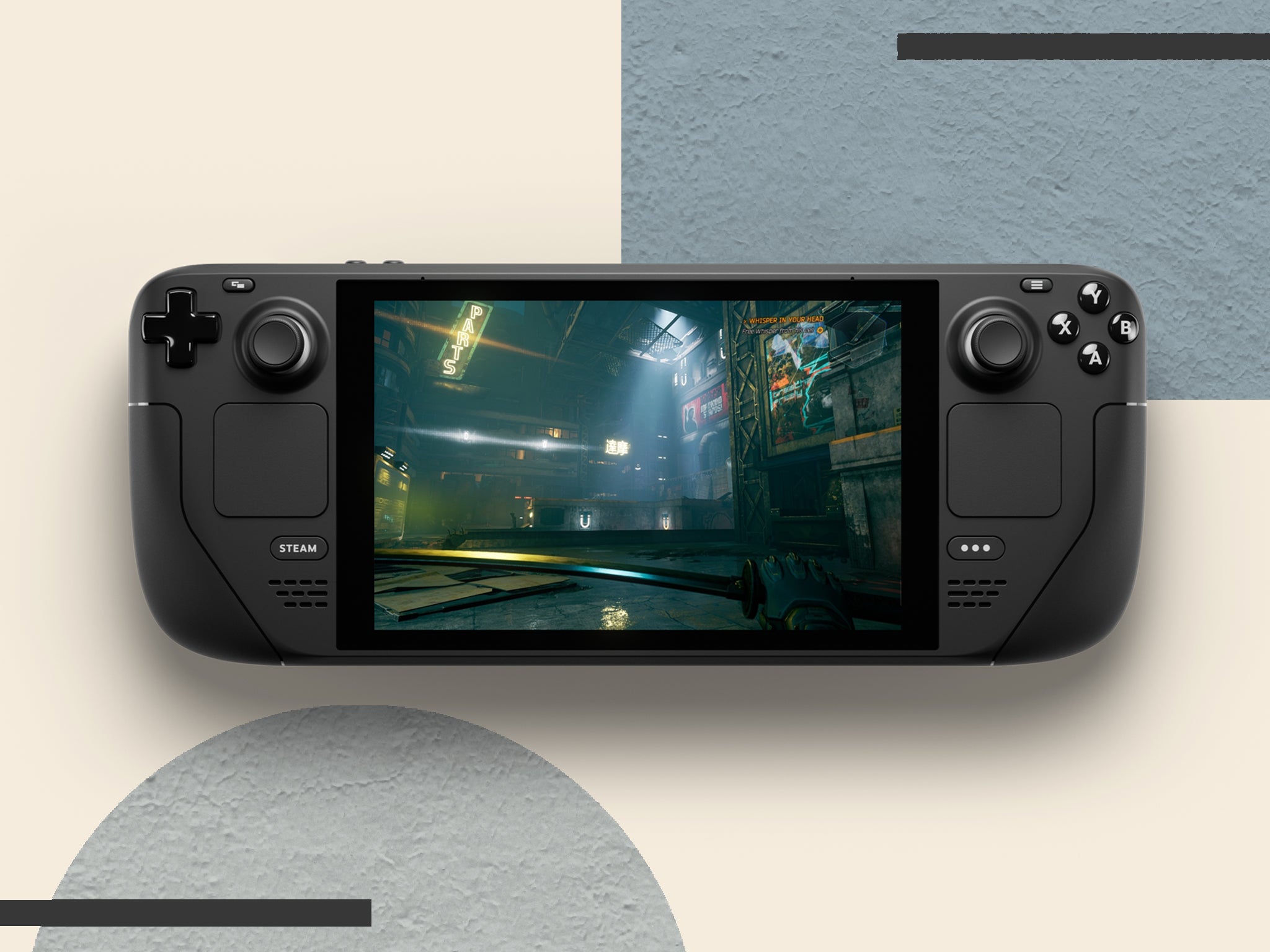
After years of leaks, rumours and anticipation, the Steam deck has finally launched. Valve’s handheld gaming PC isn’t the first of its kind, but having tested it for the past few weeks, we can confidently say that it’s the best.
Powered by the Steam online store and its enormous pre-existing catalogue of PC games, Valve’s revolutionary new console allows players to take their games library with them wherever they go, offering powerful, desktop-level performance and a streamlined, console-like experience in a portable form factor.
It’s essentially a Nintendo Switch for PC games, and the ideal solution for anyone who wants to play their Steam games anywhere they please, and without sequestering themselves away at a desk in another room like an anti-social gremlin.
For console gamers who might have previously been put off by all the faff, fiddliness and expense of gaming on PC, it’s also an enticing entry-point for the platform as a whole. It’s also helped by the option to plug the Steam deck into a screen, and pair it with a mouse and keyboard so that you don’t have to wrestle with awkward touchpad controls in mouse-dependent games.
Priced to go toe-to-toe with the PlayStation 5 and Xbox series X, the Steam deck is relatively inexpensive for a gaming PC and comes in three storage capacities. Plus, the 64GB, 256GB and 512GB models can have their storage increased further with a MicroSD card. Right now Valve is fulfilling its existing pre-orders. The waiting list for new orders extends to later in 2022.
Read more
- Ghostwire: Tokyo preview: Details about the action-horror game
- Horizon Forbidden West review
- Elden Ring release date and pre-order details
- Free PS Plus games for February 2022
- Save £19 on Horizon Forbidden West at Currys
How we tested
We’ve been playing games on the Steam deck for a number of weeks, testing verified and unverified titles across a range of genres and including Deathloop, Hades, Cities Skylines, Control, Noita, Red Dead Redemption II, SnowRunner and Outer Wilds.
We used the device indoors and outdoors to measure screen brightness in different conditions, and paired our review unit with the Lexar 1TB MicroSD card (£183.58, Amazon.co.uk) for added storage capacity.
Steam deck: From £349, Steampowered.com
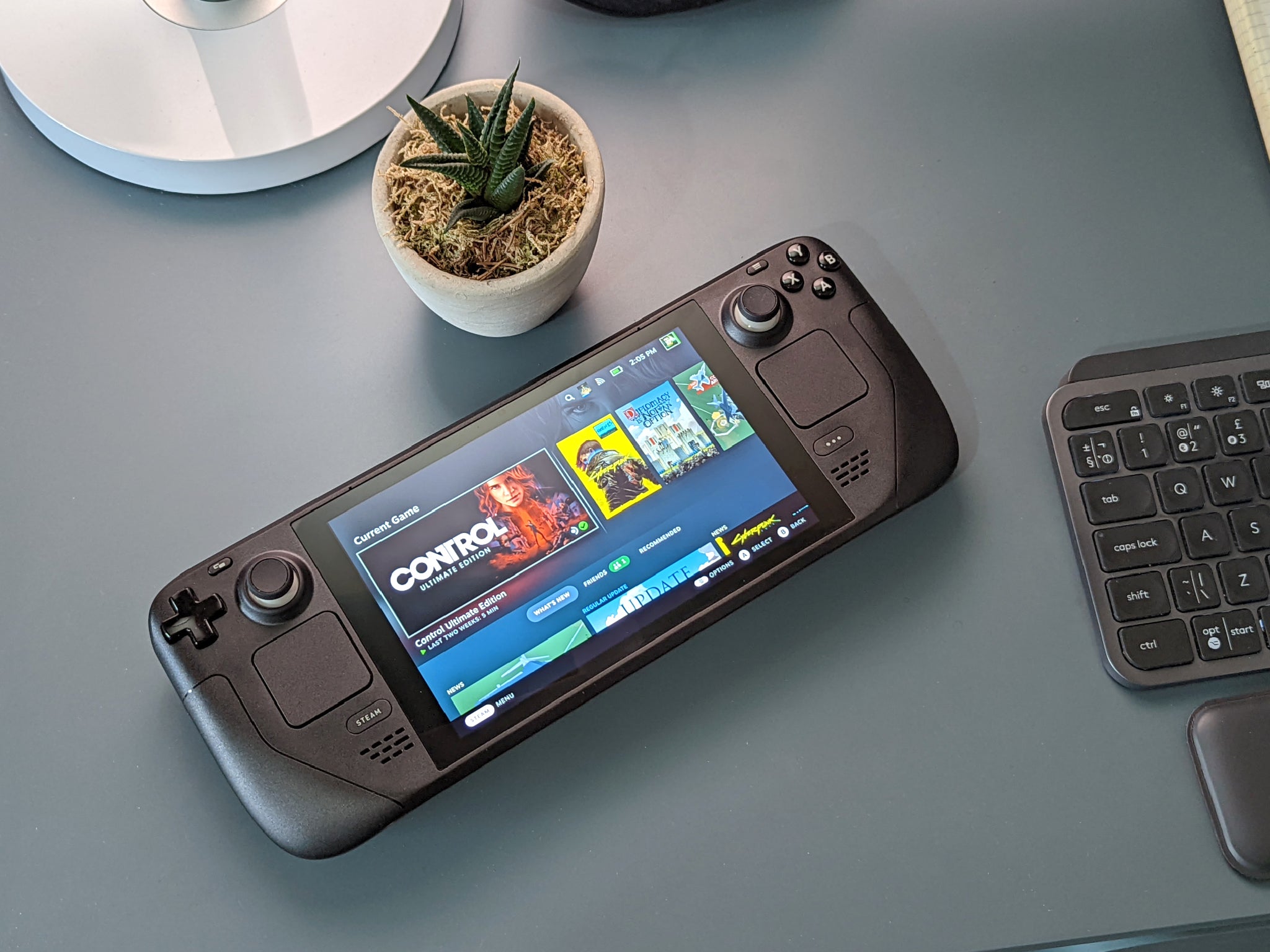
- CPU: Zen 2 4c/8t, 2.4-3.5GHz (up to 448 GFlops FP32)
- GPU: 8 RDNA 2 CUs, 1.0-1.6GHz (up to 1.6 TFlops FP32)
- RAM: 16GB LPDDR5 on-board RAM (5500 MT/s quad 32-bit channels)
- Storage: 64GB eMMC / 256GB NVMe SSD / 512GB high-speed NVMe SSD
- Size: 298mm x 117mm x 49mm
- Weight: 669g
- Screen: 7in 1280x800 (16:10) 60Hz LCD
Design
Let’s get one thing out of the way. The Steam deck is not a very pretty piece of technology. The chunky plastic casing, bulky profile and Sega Game Gear silhouette make it look like an early prototype in need of refinement. The device is a foot wide and awkward to grapple with for long play sessions, while those with smaller hands will struggle to reach some buttons without stretching and will find themselves having to prop the handheld on a table or a lap while they play.
Compared to the Nintendo Switch the Steam deck is a giant console, but it’s still designed to be a portable device you can easily whip out on public transport. Cementing this idea is the ability to instantly suspend and resume games with a single press of the power button, so dipping in and out of play is as straightforward as it is with Nintendo’s handheld.
Read more: 26 best Nintendo Switch games for every type of player
The ability to pick up games exactly where you left off is a seemingly inconsequential feature, but here it feels like a real magic trick. We’d say it goes as far as to elevate the Steam deck from a miniature PC with some thumbsticks bolted on, to something that genuinely feels like a new games console.
Performance
Here’s where the Steam deck really impresses. Valve’s handheld is a true marvel of engineering, cramming top-end PC gaming performance into a portable package. The custom AMD chip runs rings around our (admittedly ageing) desktop machine, comfortably reaching a steady and smooth 60fps with older titles like Portal 2 and side-scroller Dead Cells.
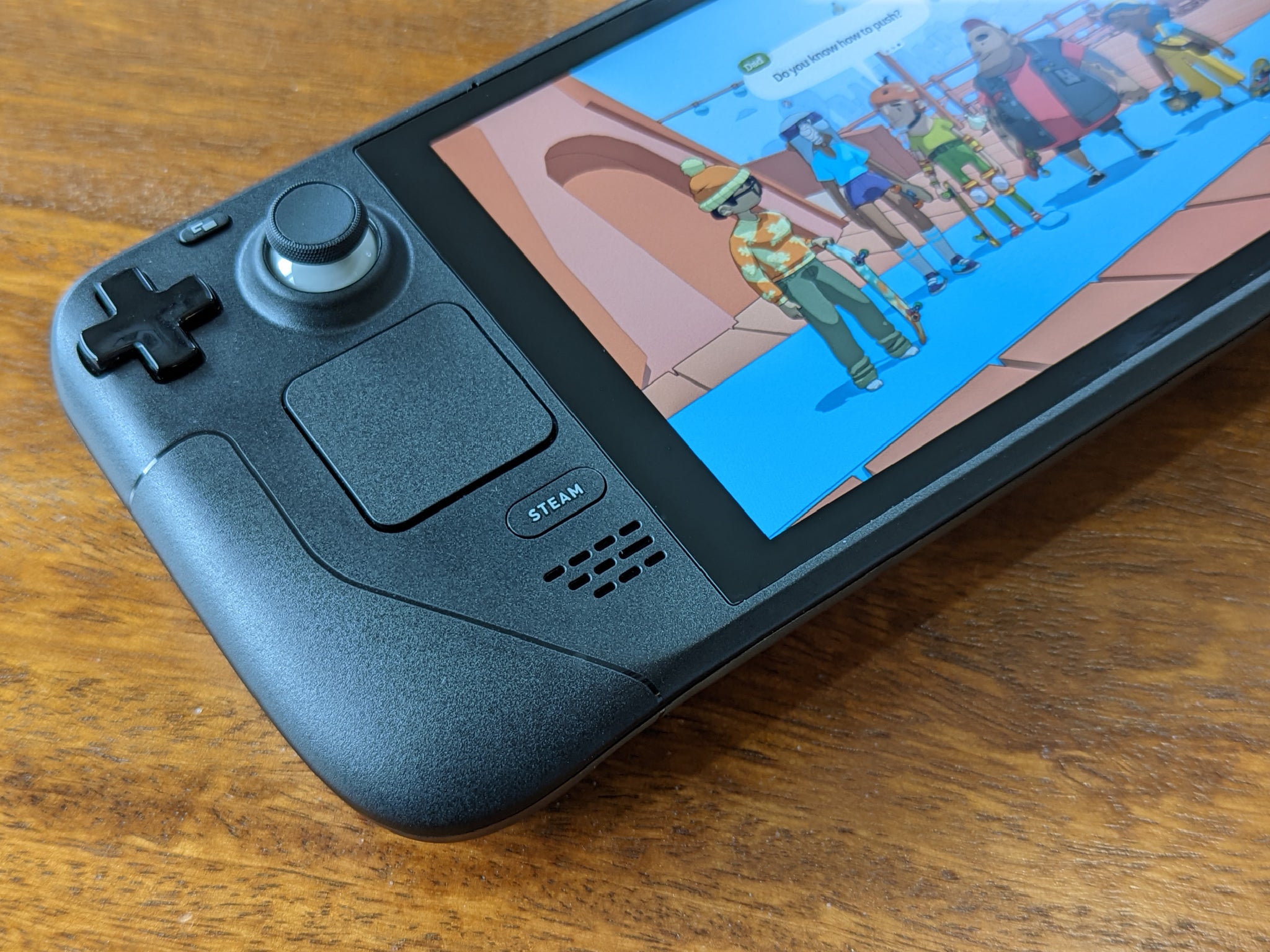
Newer, next-gen and more demanding games like Control and Metal Gear Solid V look incredible on the Steam deck, and maintain a reliable 30fps. Even games that haven’t been specifically updated to work with the Steam deck – Red Dead Redemption II for example – put in a good showing on this device. We saw frame rates in the mid to high 40s when playing Rockstar’s epic cowboy simulator on the toilet (too much information?).
What makes this especially impressive is that unlike most PCs the Steam deck doesn’t run on Windows. The handheld uses a modified version of the Linux operating system which, in conjunction with Valve’s custom-built compatibility layer, can essentially convert Windows code to Linux code on the fly. What that means for players is that it’s basically compatible with most of your entire Steam library out of the box, with some games more suited to the device than others.
To this end, Valve has launched a Steam deck verified ratings system, which is slowly working through the digital storefront’s back catalogue to give every game a compatibility rating based on criteria such as controller support, legible text, seamless switching between game launchers and anti-cheating software.
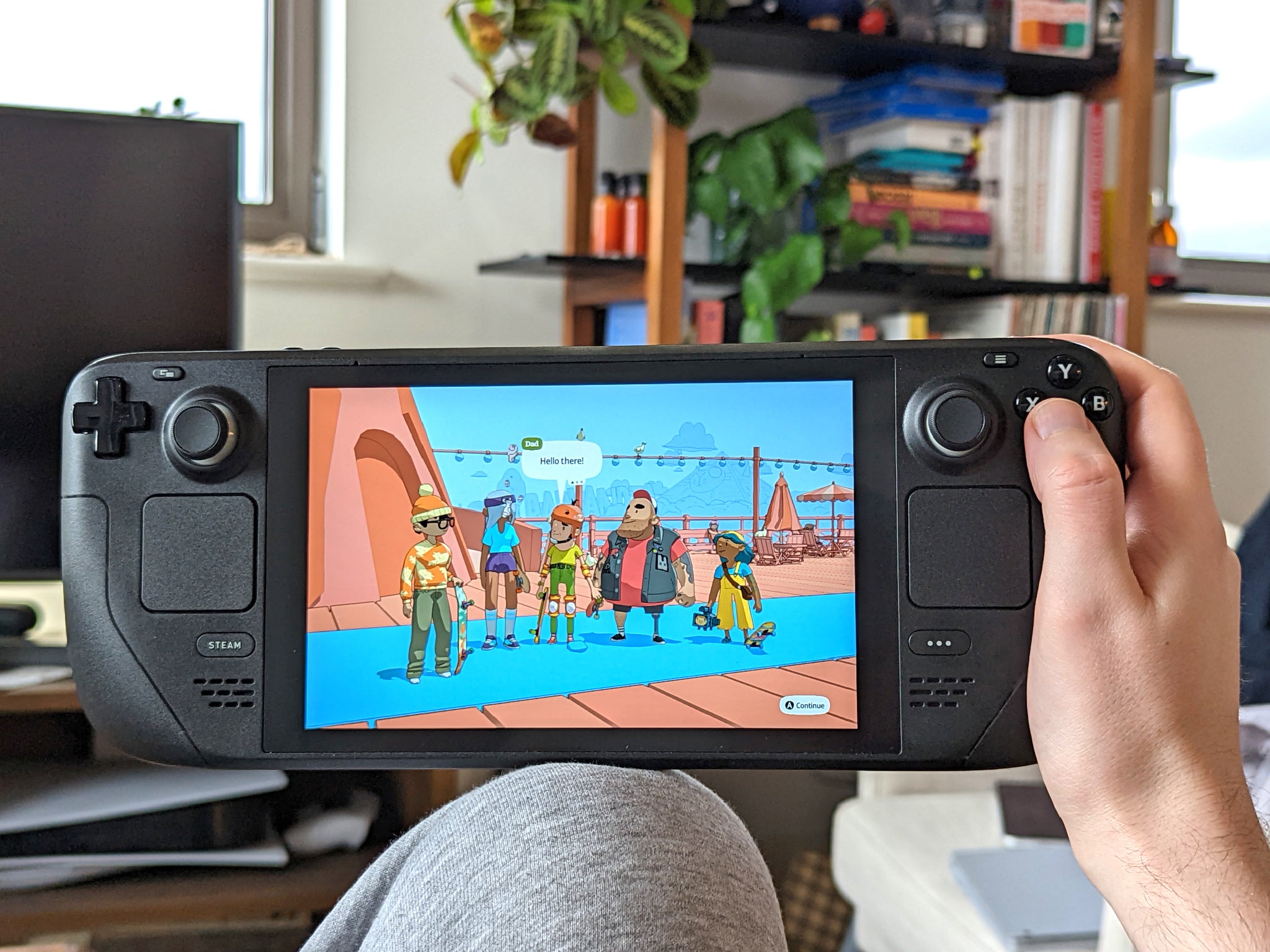
Also, as it’s an open Linux platform you’re free to install any software you like on the Steam deck, from retro emulators and media streaming services to the Windows operating system and Xbox Game Pass.
Screen
The 1280 x 800 display is a lower resolution than you’d expect from an average gaming monitor, but once the Steam deck is in your hands it’s clearly the right choice for a device of this size. Held at less than arm’s length it looks great, and the smaller resolution frees up more memory for better performance and battery life.
User interfaces on some non-optimised games will have you squinting at microscopic on-screen text, but there are generally workarounds for this and the deck will give you a comprehensive warning about each game’s compatibility. The software can manually magnify text to cope with edge cases, meaning you can muddle your way through games that have yet to be updated for the smaller screen. And most modern releases let you adjust elements of the user interface anyway.
Controls
The Steam deck is overflowing with buttons and inputs, to ensure that it’s at least basically compatible with genres from traditional FPS and racing games to mouse-dependent strategy titles like Civilization. There are four face buttons, a directional-pad, two pairs of shoulder buttons, two pairs of rear buttons, twin thumbsticks (with their own touch sensors, why not) and gyro controls for fine aiming.
The display itself is a touchscreen, which games like No Man’s Sky are already taking advantage of for things like inventory management and picking dialogue options, while one final pair of haptic touchpads are used either as mouse controls or as an alternative to the thumbsticks. Subtle haptic feedback in the touchpads creates the sensation of a rollerball underneath your thumb, which can be “flicked” to dart the cursor across the screen.
Read more: 15 best PS5 games for every kind of player, from Deathloop to Demon’s Souls
Games we tested with native controller support worked seamlessly on Steam deck. Shooters like Control and Deathloop are already designed around Xbox and PlayStation controllers, so they map neatly to the deck’s controls without any fuss.
It’s technically possible to play strategy games or games with dense interfaces and precise mouse and keyboard controls on the Steam deck, much like it’s technically possible to put your trousers on without using your hands. Cities Skylines is a good example of a game that works, though the touchpad controls take some getting used to and aren’t a pleasant way to navigate the game’s tiny menus or trace out intricate road structures.
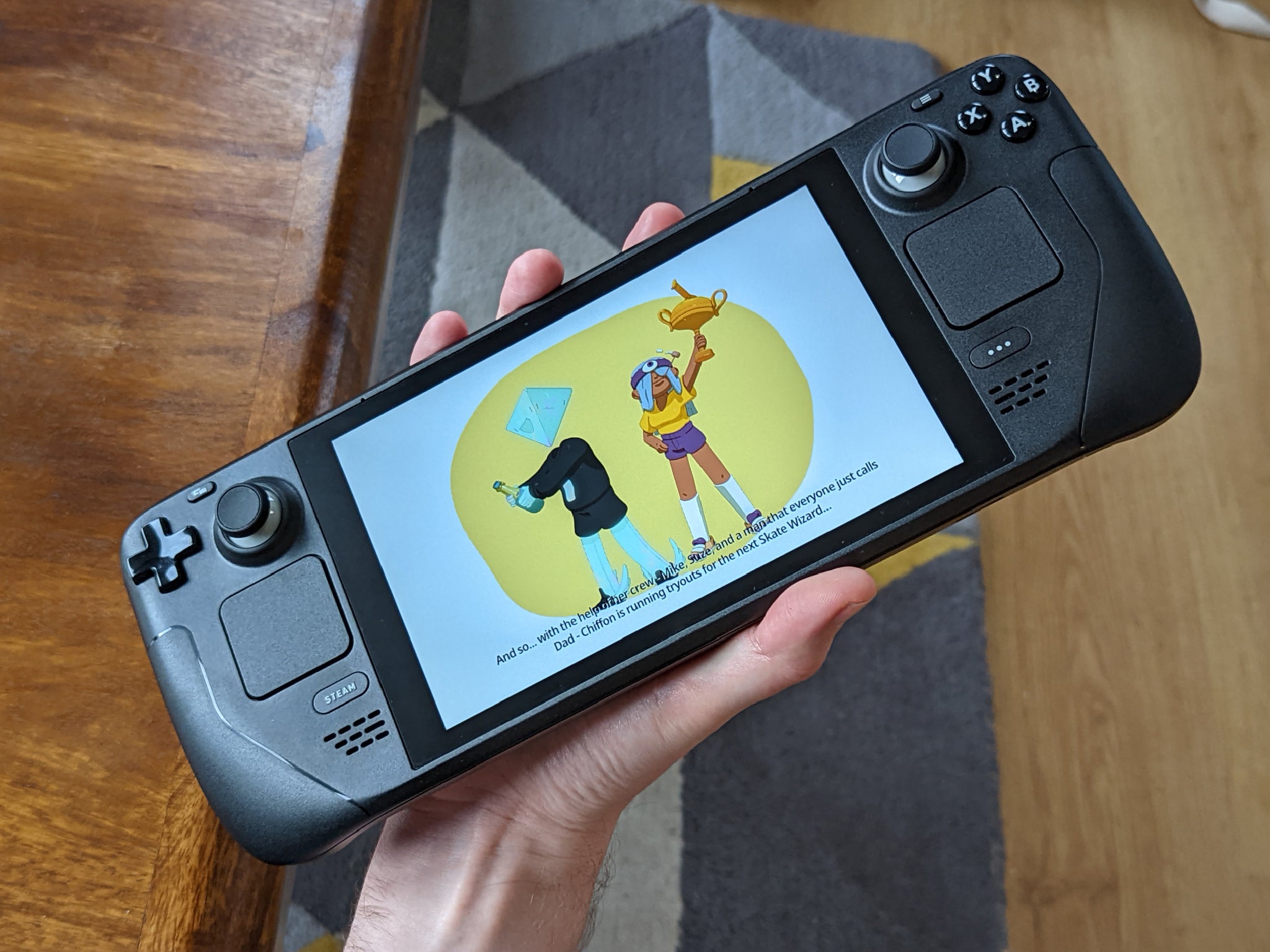
Valve’s doing a good job of encouraging developers to retrofit their games to look good on the Steam deck’s screen and play nicely with the handheld’s various control systems, with more and more games becoming officially verified each week. It’s impossible to guarantee that your favourite titles will be made compatible if they’re not already, but community-made control configurations exist for most games on Steam and can be accessed at the push of a button.
Battery life
The battery life is by far the Steam deck’s biggest weakness. The handheld PC chugs through juice like it’s going out of fashion, with some graphically demanding games draining a full charge in as little as two hours of playtime.
Read more: 9 best controllers for PC to take your gaming to the next level
When the Steam deck really gets going its fans can kick up a storm too, though they do a remarkable job of keeping the device from overheating. We’ve had gaming laptops get so toasty they’re hot to the touch, but there’s no such issue with Valve’s hardware.
During our testing period, Valve released several updates to the operating system and improved the Steam deck’s battery life by adding an option to cap the framerate at 30fps. More software updates are promised to help extend the battery life further, namely a dynamic rendering system that can dial down certain processor-intensive jobs to reduce power consumption.
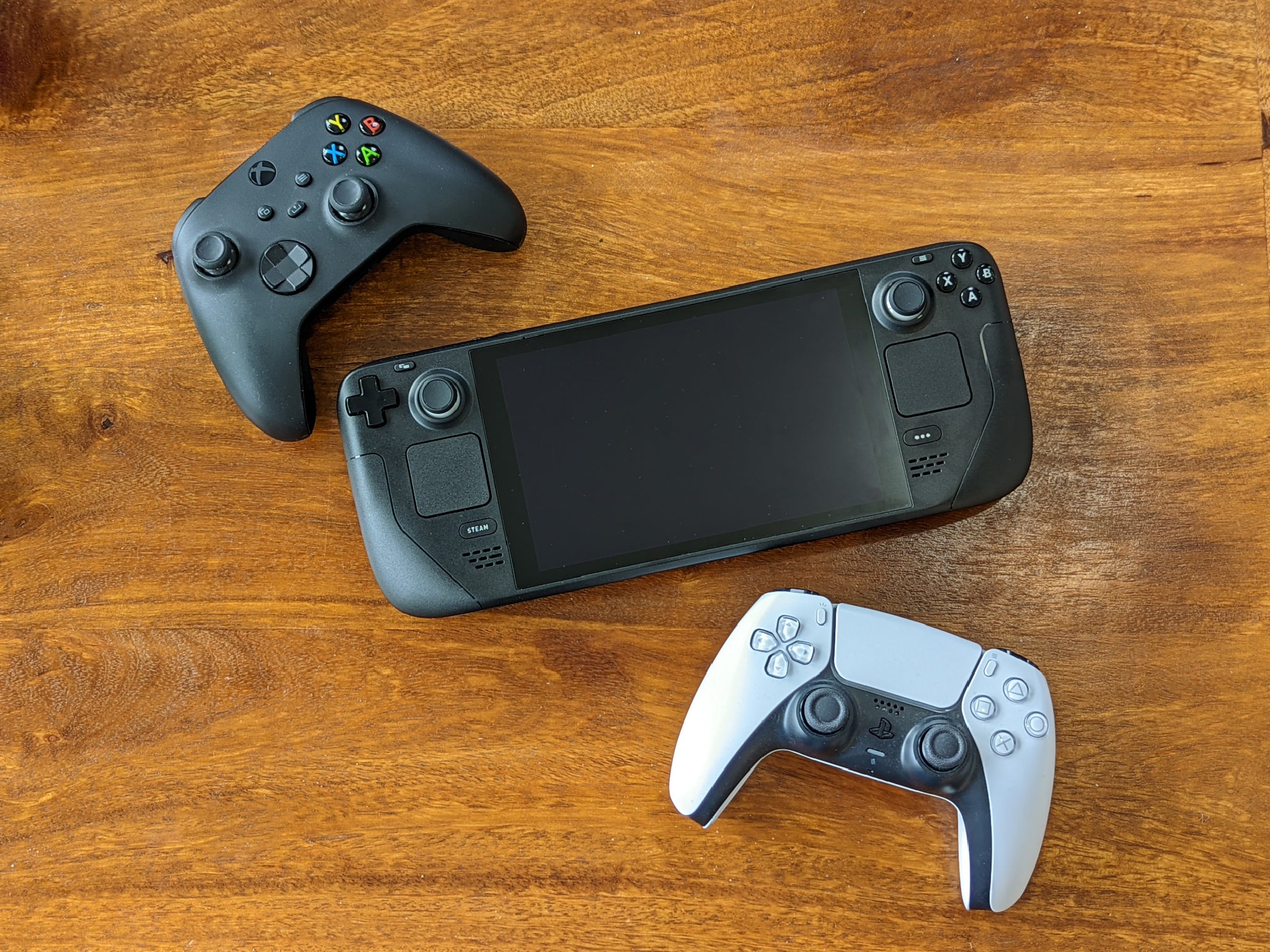
Even with these software improvements, you won’t want to take the Steam deck too far from wall power. However, most of our testing took place at home – we essentially played a lot of SnowRunner and Outer Wilds in bed and on the sofa – so we found the short battery life to be less of an issue.
The verdict: Steam deck
The most innovative thing to happen to PC gaming in about as long as we can remember, the Steam deck is an astonishing piece of hardware. Limited battery life is a major stumbling block for anyone who plans on taking it on a long-haul flight any time soon, but for most use cases the requirement to plug the handheld in every few hours is inconvenient rather than a deal-breaker.
Aggressively priced, completely open to modding and with the full weight of the Steam library behind it, Valve’s pioneering handheld feels like the beginning of a new generation for PC gaming.
Voucher codes
For the latest discounts on gaming laptops and other tech offers, try the links below:
Find the best broadband deals with Independent Advisor
Unsure whether this is for you?Read our round-up of the best laptops you can buy in 2022